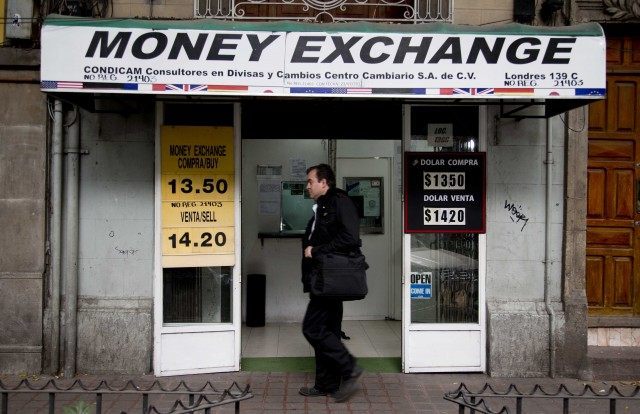The Mexican peso has fallen over 20% against the US dollar in the past year despite efforts to prop up its currency.
The pressing questions relate to why has it fallen and will it continue to fall? A fundamental reason behind the peso’s slide is that the dollar and the peso both move freely in the exchange market and their value is largely determined by capital flows. Thus, the peso’s fall is not exclusively a factor of a strong dollar; it is also likely that capital is leaving Mexico, which means that investors dump their pesos and take dollars.
Where are the pressures coming from on the peso and what is being done to stabilize the peso?
Dr. Tony Payan, director of the Mexico Center at the Baker Institute, Rice University, notes that the Mexican economy is mired in a number of important uncertainties—economic and political, which probably make investors uneasy about their capital in Mexico or, at a minimum, postponing further investment in the country. Moreover, a major financial change develops in Mexico. Payan notes that the production of oil has fallen and the price of oil has fallen 50%, which puts pressure on the peso with substantially less foreign exchange from exports.
With the understanding that the supply of pesos and the demand for dollars dictates matters here, the Government of Mexico (GOM) tries to stabilize the peso by selling dollars. For a period of two months, August and September, the GOM looks to sell US dollars at a rate of $200 million a day or about $8 billion through the end of September. This can be done thanks to the previous PAN administrations, both of which built up the dollar reserves to near $200 billion dollars.
Uncertainty also comes from the fact that the current president has increased the foreign debt about 35%. It is nothing like the Greek debt at about 170% of Gross Domestic Product. The Mexican debt is more like 50% of Gross Domestic Product, which is manageable, but the debt pressure is upward at this time.
Also, as part of national fiscal reform the GOM has increased the taxes on the middle class and that has slowed both consumption and entrepreneurship. Thus, the new taxes have put cold water on economic recovery. Additionally, productivity is flat. Mexico has little technology innovation, relying mostly on raw labor for its production. Demand for Mexican goods is also down elsewhere. With the world economic slowdown, Mexican exports are flat. More worrisome, there is a flight of wealthy and upper middle class Mexicans abroad. The Woodlands, near Houston, nickname is Mexico City del Norte. Finally, there is considerable growing concern regarding security in Mexico on local, state, and national levels, which may in the long run deter further investment in certain regions of the country. Foreign investors think twice before expanding investments or beginning to invest in Mexico.
If these trends continue it will be difficult to stabilize the peso. Yet, a devalued peso will encourage Mexican exports and increase tourism. However, it may hurt Mexicans who import supplies for their production processes and eventually add some inflationary pressures.

COMMENTS
Please let us know if you're having issues with commenting.